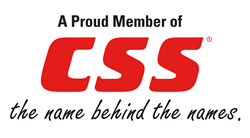Advances in construction techniques are ongoing. In recent years, many have only become possible through corresponding developments in cementitious product design. Today's use of cementitious products in building, construction and mining is significant and in some cases has reached the point where much of the product is an important structural component of the building.
Bostik Australia is focused on offering an extensive range of cementitious products, designed specifically to address the advancements in practices throughout the civil and construction markets.
Bostik cementitious grouts are examples of how formulated products offer specific qualities to the construction industry. The core range comprises of Class A and Class C products, engineered to suit the predominate end use applications in construction. Complementing the core products, a range of specialty grouts has been designed to satisfy specific project or industry needs.
Cement has a natural tendency to shrink during curing. Cementitious grouts have the potential to shrink more than concrete. This is because there is far less aggregate (filler) and correspondingly much more cement paste. There are two common forms of shrinkage:
Project success often lies in the correct specification and design of products. Bostik offers a complete technical services package via the technical and specifications services. Whether it be systems application, specification documentation or on site assistance, Bostik's technical team will ensure the required support is available at every stage.
Always refer to the Product Technical Data Sheet (TDS) and Material Safety Data Sheet (MSDS) before using. For Epoxy Grout, refer to the corresponding Technical Data Sheet (TDS) for application instructions.
The substrate surface must be clean, sound and free from oil, grease, curing compound or any loose materials. It must be mechanically abraded back to a sound concrete surface.
It is essential to pre-soak the concrete substrate prior to application of the cementitious grout. Pre-soak substrate with water for a minimum of 6 hours prior to grouting. Immediately before pouring, the excess water should be removed. In the case of bolt/anchor holes, the holes must be blown out to ensure no traces of free water are present whilst grouting.
Formwork must be constructed to facilitate rapid and continuous filling, whilst remaining leak proof and water tight. Foam rubber strips or suitable sealants underneath the formwork are recommended.
Due to expansion, unrestrained areas must be kept to a minimum. It is advisable not to leave any unrestrained areas.
At temperatures below 5°C the cure rate and strength development will be dramatically reduced.
If early strength is required, it is advisable to use heated water and condition the cementitious grout to 25°C. Do not exceed this temperature.
At temperatures above 30°C, it is advisable to use water below 20°C when mixing grout. All materials must be kept cool and away from direct sunlight. If practical, the installation area should be shaded by erecting shade screens. If ambient temperatures are excessive, grouting should be scheduled for early morning or late afternoon.
Bostik's range of grouts require between 3 - 4.4 litres of potable water per 20kg bag, depending on the desired consistency. Mixing should be performed using a forced action high shear stirrer powered by a heavy duty electric mixing drill at approximately 600rpm.
When the entire contents of the bags have been added to the water, mix for a further 3 – 5 minutes to produce a smooth homogeneous consistency.
It is essential that the grouting operation is continuous hence ensure sufficient labour and mixing capacity is available.
The desired ambient temperature for pouring is approximately 20°C. At this temperature it is essential the grout is placed within 25 minutes of mixing as this will ensure the expansion process is maximised.
Ensure the entire area to be grouted is completely filled. We advise the following:
To prevent excessive moisture loss during curing, Bostik recommends one of the following:
At ambient temperature, formwork should be removed no sooner than 24 hours after completion of grouting. The covering should stay in place for a further 6 days. Lack of sufficient curing could result in plastic cracking and drying shrinkage on the surface.
Bostik has established a testing service (PATS) to assist in specifying and selecting the most suitable product for a certain application. The service is available on large projects prior to commencement of works. Consult a Bostik representative for further information.
Bostik cementitious grouts have a shelf life of twelve (12) months if kept in a dry environment completely away from moisture.
See the material safety data sheet.
Grouts should be removed from tools and equipment with clean water immediately after use.
